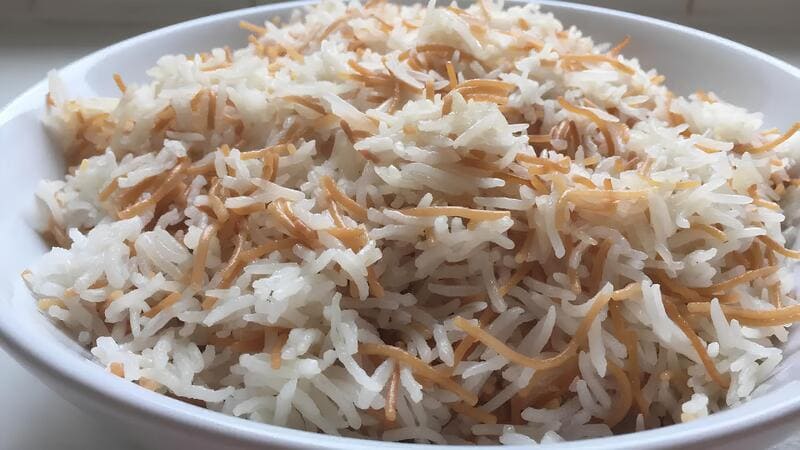
Egyptian Rice with Noodles is a beloved dish in Egyptian cuisine, known for its simple yet delightful flavor and versatile use across various meals. The combination of fluffy rice and crispy vermicelli noodles results in a distinct texture that pairs perfectly with stews and meats. This dish, also referred to as “Roz bil Sha’reya,” showcases the art of preparing rice in a way that ensures every grain remains separate and tender.
This classic dish is an easy and wonderful way to enjoy a Middle Eastern staple while exploring the rich culinary traditions of Egypt. With a vegan and vegetarian appeal, it’s a great addition to many diets. The choice of oils and the meticulous process of frying the vermicelli and soaking the rice ensure a perfect outcome every time, making it an essential recipe for any home cook.
Ingredients
- 1 cup broken vermicelli
- 4 tbsp. olive oil
- 1 tbsp. vegetable oil
- 2 cups American rice (or basmati rice)
- 2 tsp. salt
- 4 cups hot water
Preparation
- Heat 4 tbsp. olive oil and 1 tbsp. vegetable oil in a large pot over low heat.
- Add 1 cup broken vermicelli to the pot and stir continuously to avoid burning, until golden brown.
- Rinse and soak 2 cups of rice in warm water for 1 hour, then drain completely.
- Add soaked and drained rice to the pot with the fried vermicelli and fry for 2 minutes, ensuring each grain is coated with oil.
- Stir in 2 tsp. salt, or adjust to taste.
- Add 4 cups hot water to the pot for every cup of rice and vermicelli combined and stir to ensure even distribution.
- Bring the mixture to a boil, then reduce heat, cover the pot, and simmer for about 15-20 minutes until the water is absorbed.
- Let the rice rest for 10 minutes covered before fluffing with a fork and serving.
Did you know?
Did you know that Egyptian rice with noodles is a common side dish in many Middle Eastern and Arabic households? Each family often has its own twist on the recipe, whether it’s the type of oil used or the specific rice-to-noodle ratio. Olive oil, a staple in Mediterranean cuisine, adds a unique flavor, though ghee or butter can also be used for a richer taste.
The soaking of the rice is a crucial step, as it allows the grains to absorb some water before cooking, which helps them stay separate and fluffy. Historically, this method has been a cornerstone in reducing cooking time and ensuring an even texture, preventing the rice from becoming mushy.
Versatile and adaptable, this dish complements a wide range of main courses, from hearty stews to lighter vegetable dishes. In Egypt, it’s often served alongside molokhia, a traditional soup made from jute leaves, or paired with richly spiced meats like kebabs. As a vegan and vegetarian-friendly option, it embodies the essence of Middle Eastern hospitality, where food is meant to be shared and enjoyed communally.
